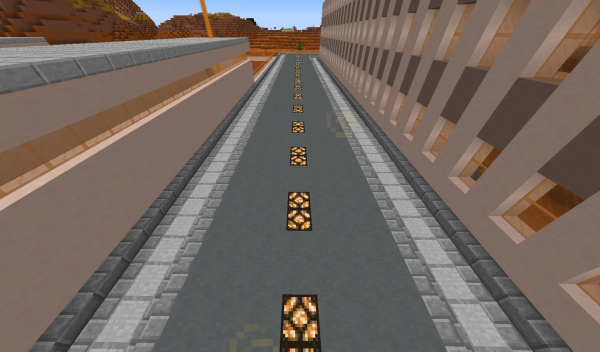Nos Astra Architecture
These are the guidelines for futuristic buildings created by DakkaDok and used at his cities, New Nos Astra and Nos Aeterna. They differ from the original materials and designs used at Nos Astra, which are no longer used.
Building Materials
There are two types of building in NAA: Industrial and Non-Industrial. Industrial buildings are built mainly from white terracotta and orange glass. Non-Industrial buildings use white concrete and blue glass for a cleaner look instead.
Roads are made from cyan terracotta with walkways of stone slabs and stairs. Other colours of terracotta and concrete may be used as accents and for detailing.
The Basics
The name, as well as many of the general ideas of this style, are inspired by the city of Nos Astra from Mass Effect 2.
Most non-functional buildings should be tall and thin. While parts of them will always be rectangular, try to incorporate curves or round edges into everything. Large, flat walls are boring to look at, and should be broken up by either some structure or at least a different blocktype. Make sure to use at least as much glass as concrete/terracotta, making the buildings look transparent and layered in front of each other.
Ground Level
Main roads should look like this:
Roads are seven blocks of cyan terracotta across. The middle column is alternating between two blocks of cyan terracotta and two redstone lamps. This is enough to keep any mobs from spawning on the roads.
The sidewalks are three blocks across each, with stone slabs in the middle and stone brick stairs facing outwards. The entire road design is mob-proof.
This style of road should only be used sparingly, smaller roads of three cyan terracotta blocks across should branch off and connect most buildings instead, especially in any kind of industrial area.
In non-industrial areas, grass and flowers should be used to fill in the space between buildings and roads. This should always look cultivated rather than natural. Industrial roads should have little to no such vegetation and instead be tightly packed with buildings and infrastructure.
Higher levels
SECTION PLACEHOLDER
